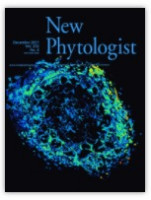Biodiversity today has the unusual property that 85% of plant and animal species live on land rather than in the sea, and half of these live in tropical rainforests. An explosive boost to terrestrial diversity occurred from c. 100–50 million years ago, the Late Cretaceous and early Palaeogene. During this interval, the Earth-life system on land was reset, and the biosphere expanded to a new level of productivity, enhancing the capacity and species diversity of terrestrial environments. This boost in terrestrial biodiversity coincided with innovations in flowering plant biology and evolutionary ecology, including their flowers and efficiencies in reproduction; coevolution with animals, especially pollinators and herbivores; photosynthetic capacities; adaptability; and ability to modify habitats. The rise of angiosperms triggered a macroecological revolution on land and drove modern biodiversity in a secular, prolonged shift to new, high levels, a series of processes we name here the Angiosperm Terrestrial Revolution. >>Publication

